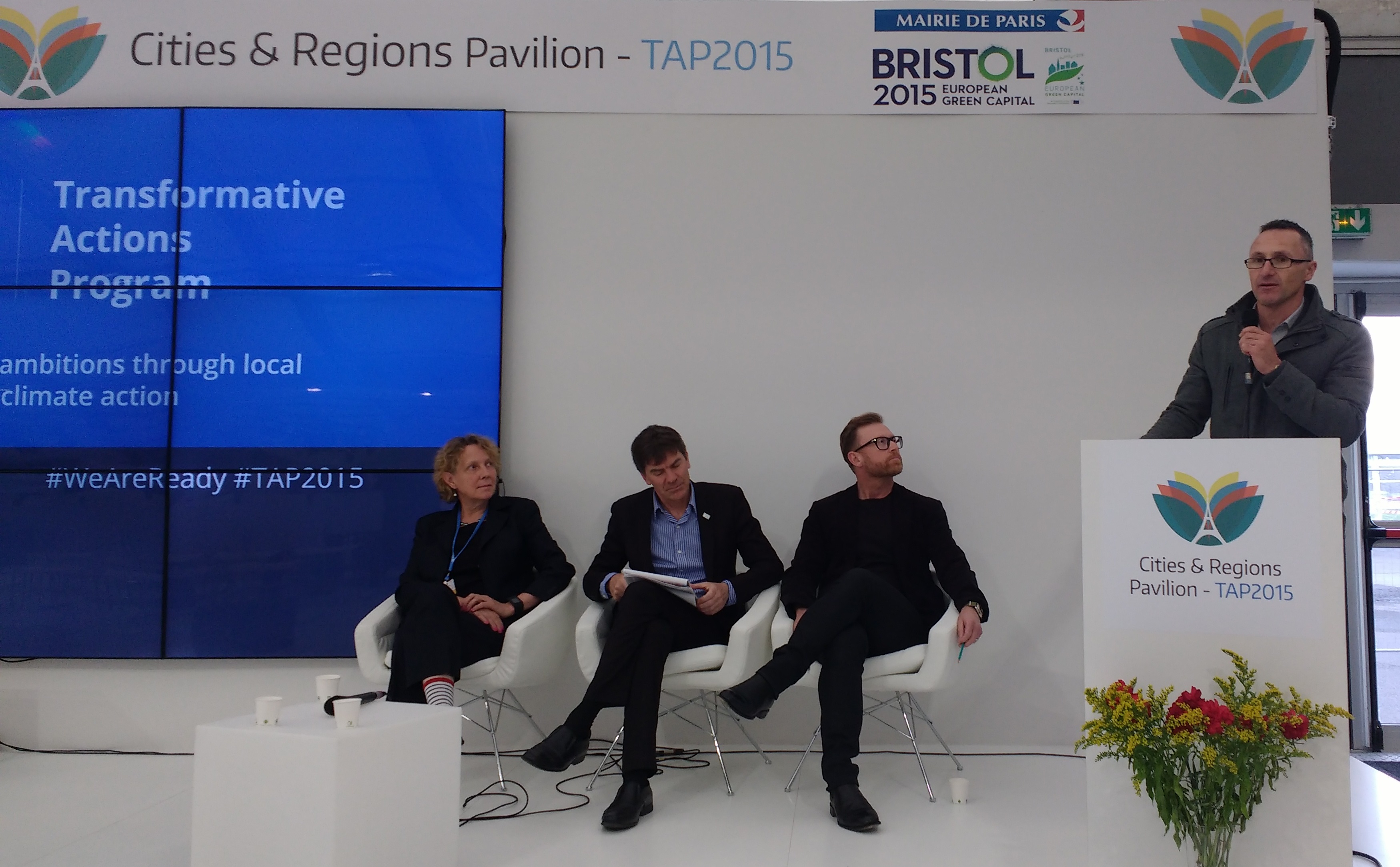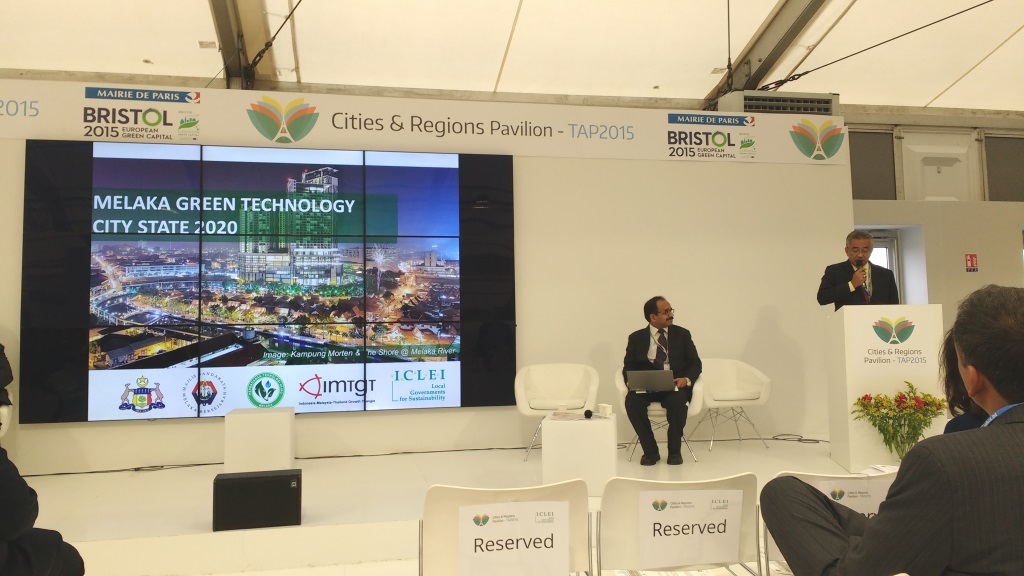TAP Time: Oceania
“TAP Time” sessions at the Cities & Regions Pavilion showcase the most promising projects from the Transformative Actions Program (TAP). In the Oceania TAP Time session on 10 December, cities from the region demonstrated their collective commitment to long-term mitigation and adaptation action through comprehensive strategies and community engagement.
Cathy Oke, on behalf of Troy Pickard, Mayor of the City of Joondalup, Australia presented Joondalup’s Climate Change Strategy 2014-2019. Joondalup is a biodiversity hotspot, but changes in weather will increase risk of fires, reduced rainfall and increased erosion. Addressing the threats associated with climate change has called for an innovative and bold approach. 11 key risks have therefore been identified, with six key focus areas and 43 innovative ideas and initiatives.
Separate targets have been developed for corporate and community mitigation targets, with a minimum of two community mitigation projects per year. So far, for example, solar panels have been constructed on 12 city buildings. As a climate change strategy cannot be implemented alone, partnerships have been developed with the private sector and other stakeholders. Alignment of government policies at all levels is also important, Oke concluded.
Ulrich Sumptoh, Lord Mayor of Port Vila, Vanuatu presented the city’s Strategic Planning Framework. The framework will manage population growth and urbanization, contain urban sprawl, conduct urban renewal and provide services including waste management. It will contribute to climate change goals by implementing codes, regulations and guidelines; encouraging the use of renewable energy; and developing strong communities through zoning.
Professor Barbara Norman, Foundation Chair in Urban and Regional Planning at the University of Canberra, Australia presented Canberra’s strategy, noting that more than 80% of the community supports action on climate change. Canberra’s target is zero net emissions by 2060, and its main focus is on renewable energy, with a target of 90% renewable energy by 2020. The city is on track to reach this target, Norman said, adding that initial scepticism had been overcome. Wind, large scale solar, rooftop solar and waste to energy were all involved.
Looking to the future, Canberra is producing an adaptation strategy to integrate with its mitigation efforts for a comprehensive plan. The city is also examining a living infrastructure strategy to integrate water use in the landscape, helping to cool the environment, maintain ecosystems and making the Canberra region a pleasant place to live. Climate change is about leadership, Normal concluded, while collaboration and innovation are also critical.
Councillor Wayne Walker presented “Low Carbon Auckland”. This roadmap, he indicated, was developed through 10 work streams across different sectors. Initiatives include the electrification of railways to shift people away from private car use, along with the implementation of dedicated cycle paths and ferry transport. Auckland is also replacing its streetlights with LEDs and retrofitting buildings. In the council building, Walker added, all of the green waste was processed by a network of worm farms in the basement. Walker emphasized the need for aspirational targets, and urged other city leaders to join ICLEI and the Compact of Mayors.
In a video message Amanda Stevens, Mayor of Port Phillip, Australia, explained that Port Phillip is aiming for zero emissions from council buildings by 2020. For the community, it has set the targets of reducing greenhouse gas emissions by 50% and water use by 70% by 2020. Projects include the fitting of solar cells to buildings and the replacement of conventional street lighting with LEDs. However, Stevens said, it is important to enter into a conversation with the community. For example, as the population grows, car parking is an issue, and this must be considered when sustainable transport is being developed.
Mayor Simon Richardson of Byron Shire explained how Byron Shire is aiming to create Australia’s first “zero emissions community”, with zero net emissions for the entire regions by 2025. The plan covers all sectors: buildings, energy, land use, transport and waste. The project is led by the community, which has considerable expertise, for example as the home of permaculture movement. “Localism is crucial for sustainability, it has to come from and profit the local area”. Byron Shire is looking to develop light rail along with riparian land planting projects, and has implemented organic waste collection with research on biodigestion ongoing.
Mayor Graham Pittock of Mornington Peninsula Shire described how the Shire is working to mitigate risks. A recent study concluded that the Shire is at threat from bushfires, sea level rise, drought, more intense storms and increased average temperatures. The Shire is therefore investing to understand the risks, particularly with regards to flooding, and is implementing restrictions on building to mitigate the risks. In addition, the Shire has engaged the community and has committed to carbon neutrality by 2020.
Huxley Lawler, Head of the Environmental Department at the City of Gold Coast, Australia highlighted how Brisbane is acting strongly on adaptation as well as mitigation. This is particularly evident with the Hinze Dam. The conventional policy for responding to increased flood risks is to raise the height of the dam and to build within the new flood plain level. However, this erodes resilience and increases the potential cost from a major flood. By not building in the new floodplain, Brisbane will increase the resilience of the city, protect against economic loss and put downward pressure on insurance premiums. As Lawler said, “no one will be worse off”, adding: “policy is more powerful than infrastructure”.
Closing the session, Richard di Natale – leader of the Australian Green Party – praised cities in Oceania for taking ambitious climate actions, explaining that he was “feeling more optimistic because of the work going on in cities at COP21”.




